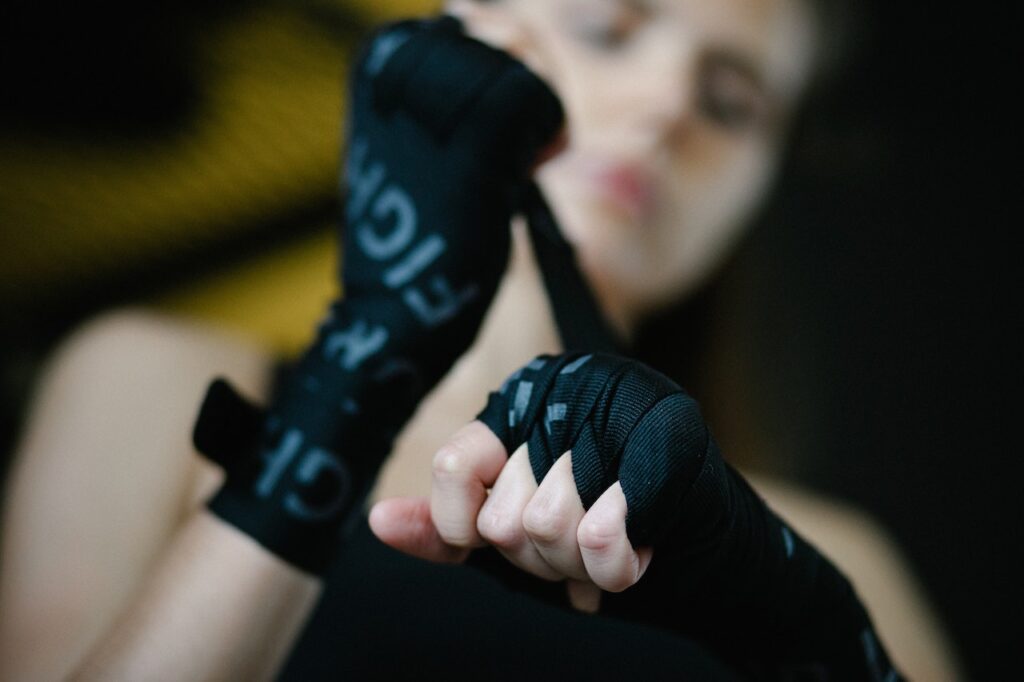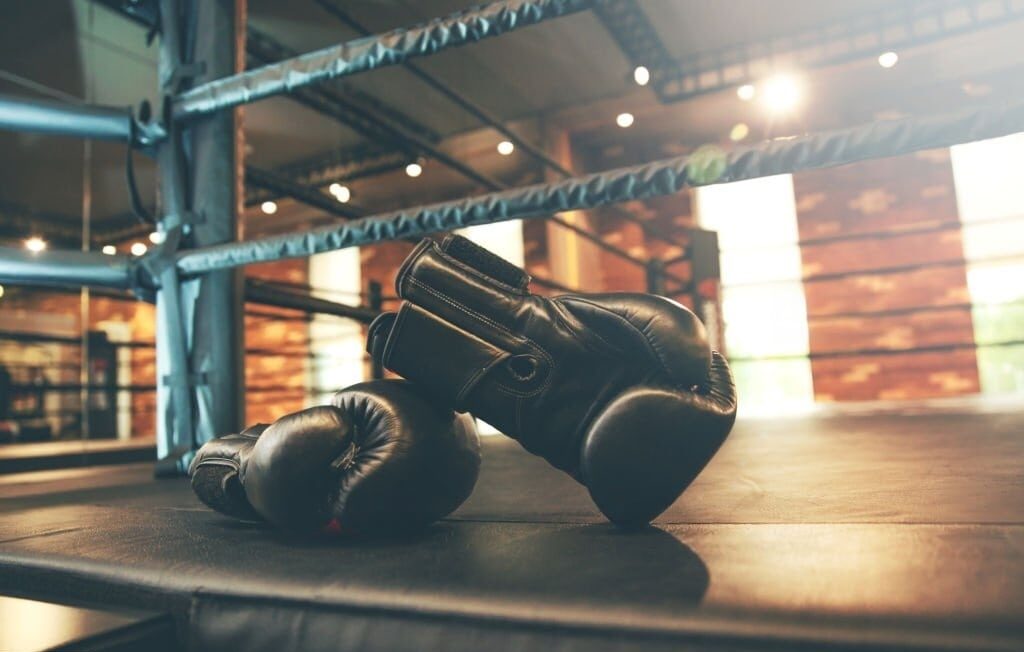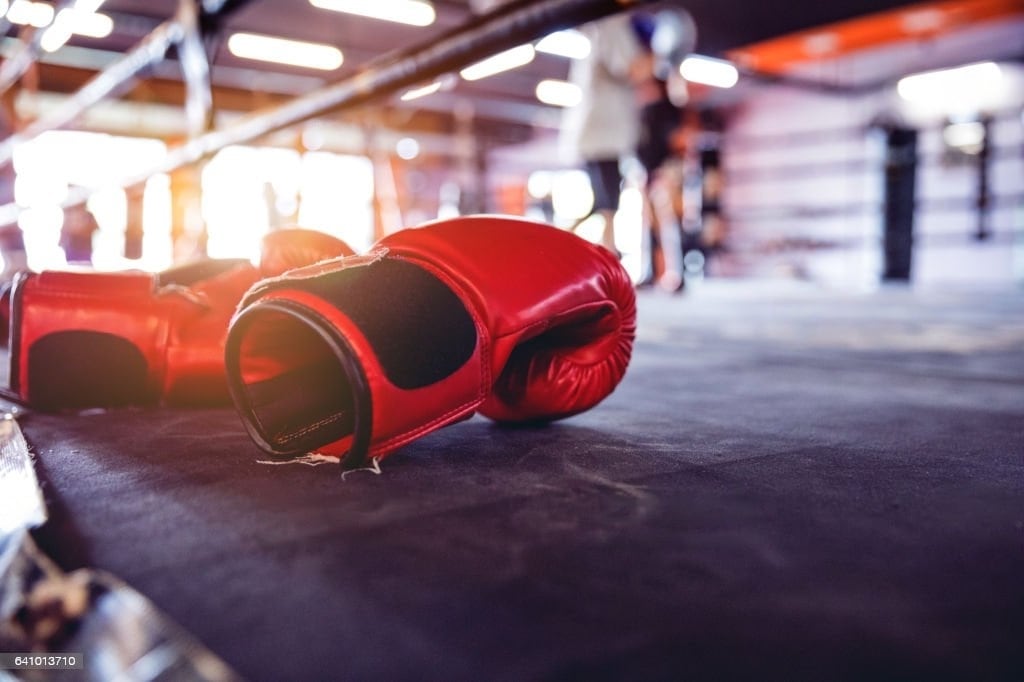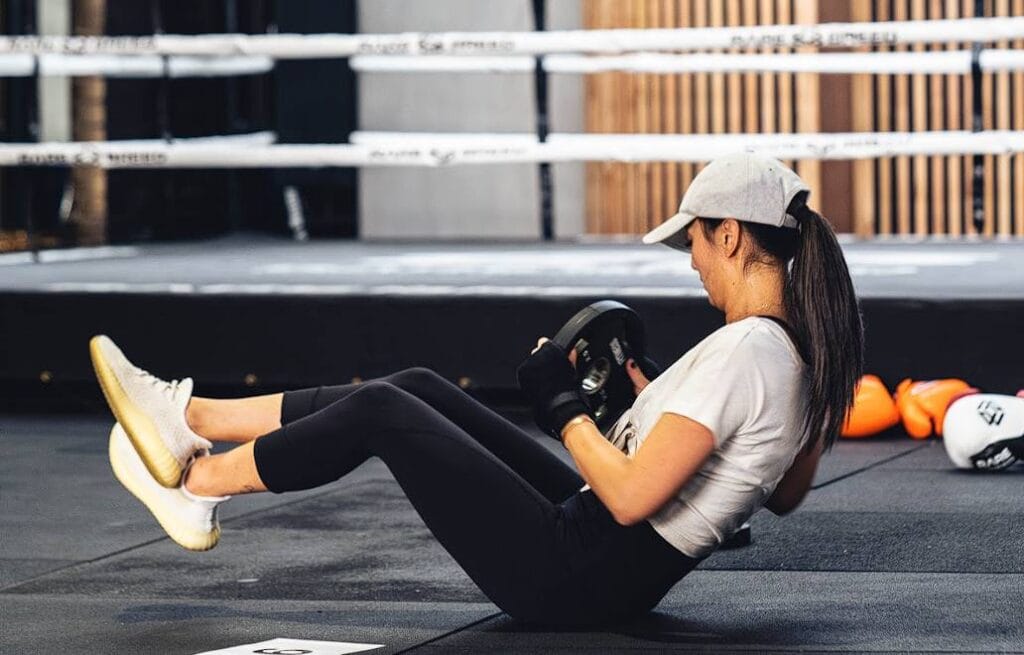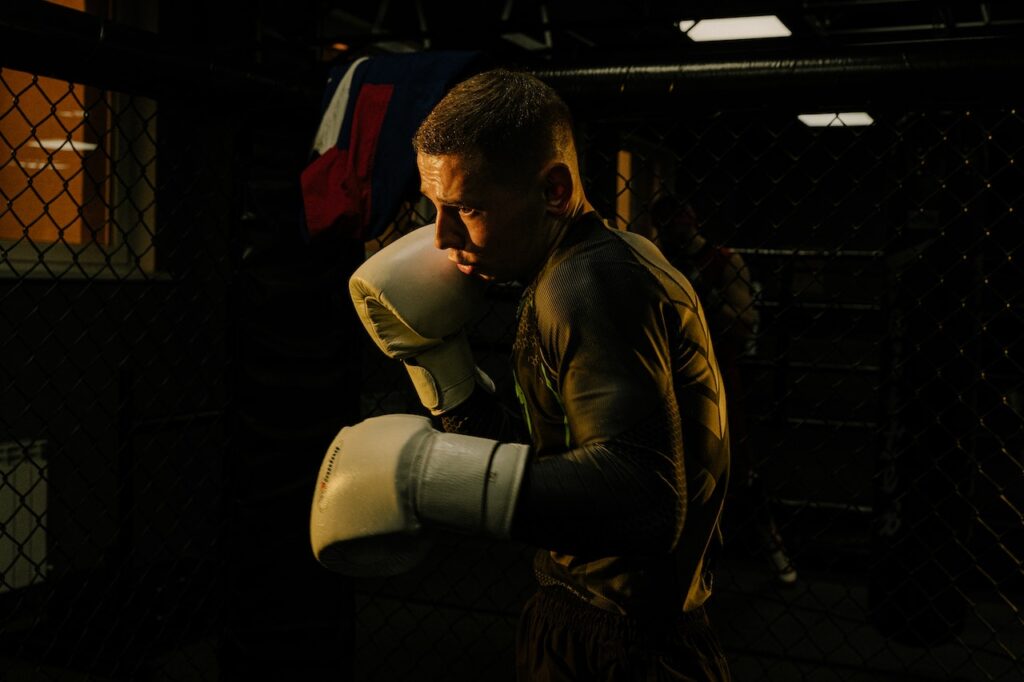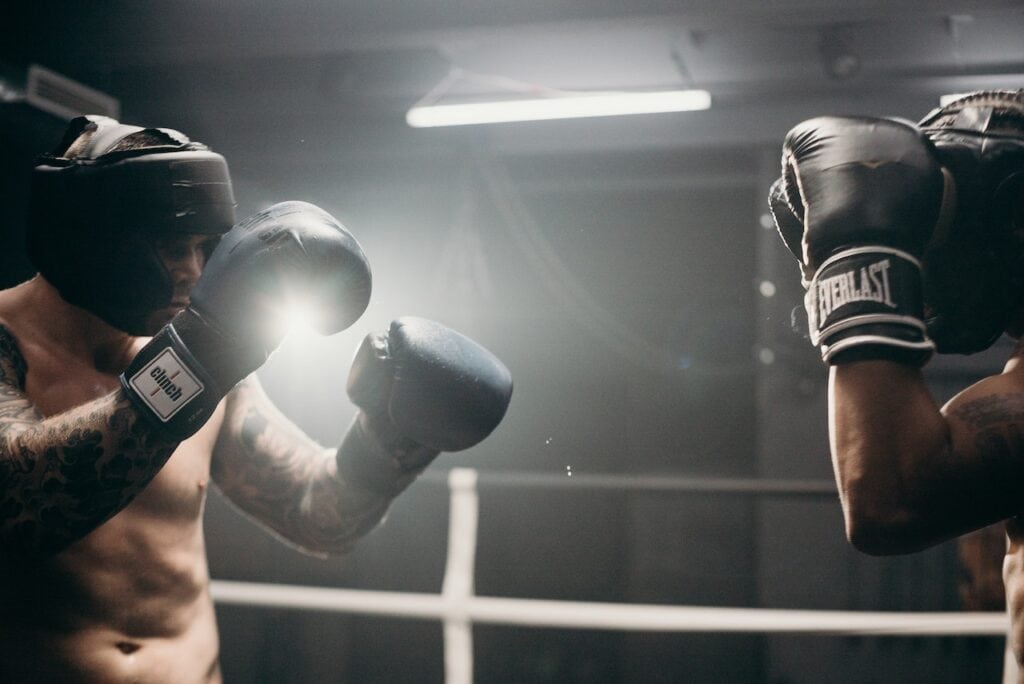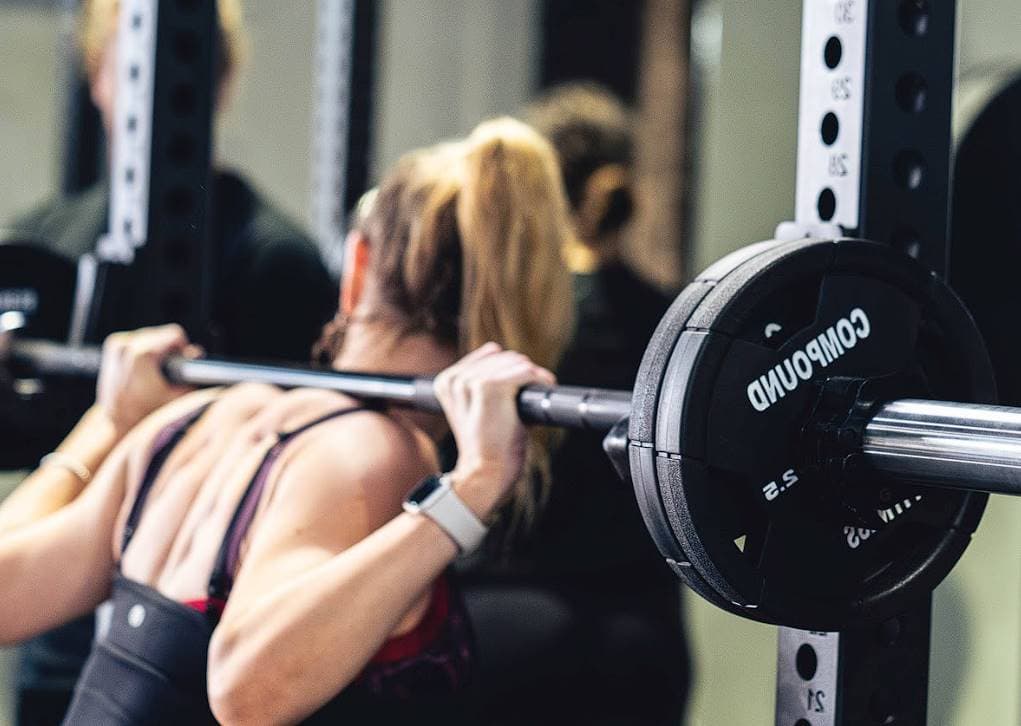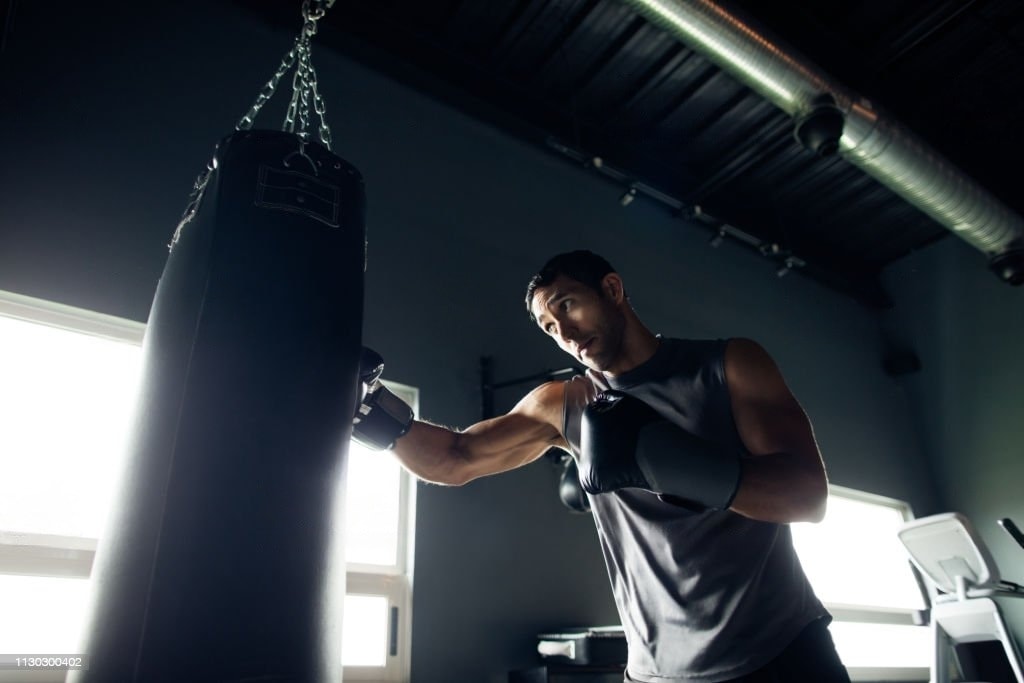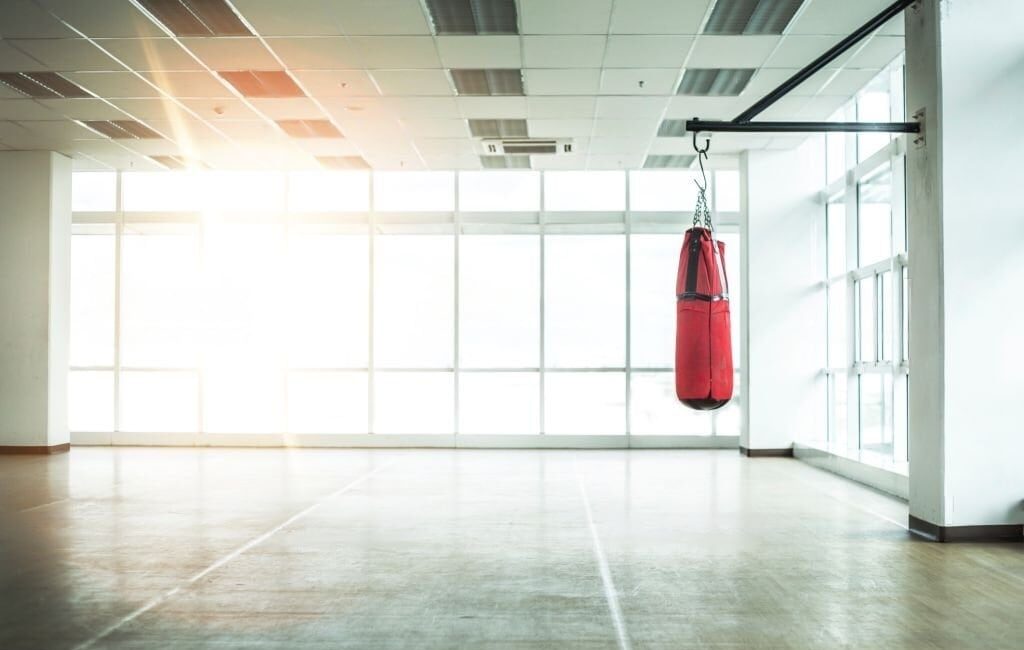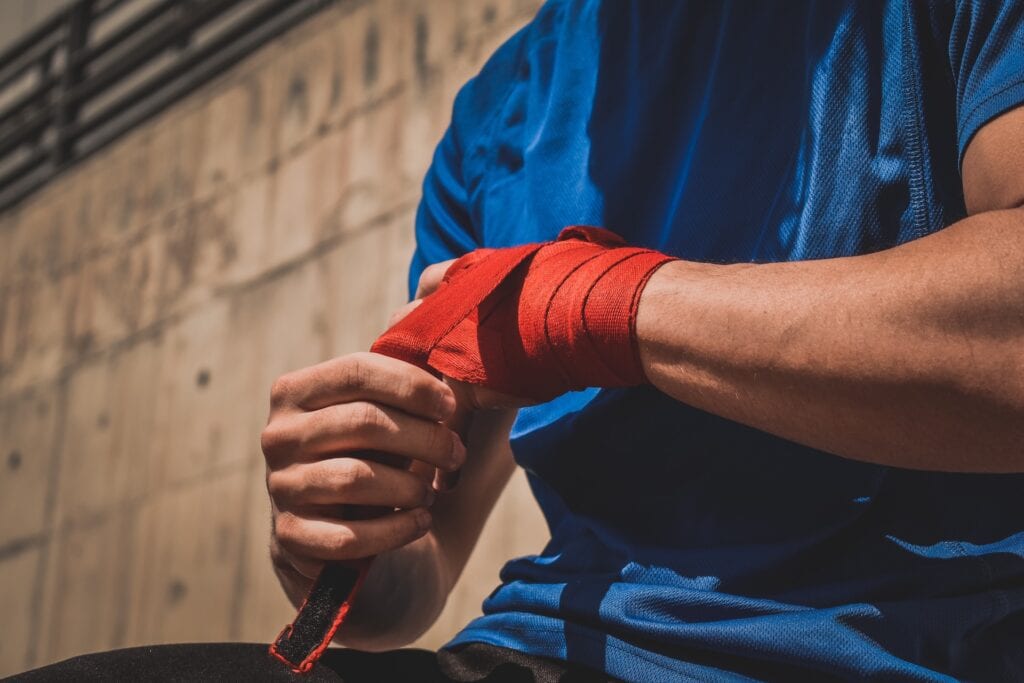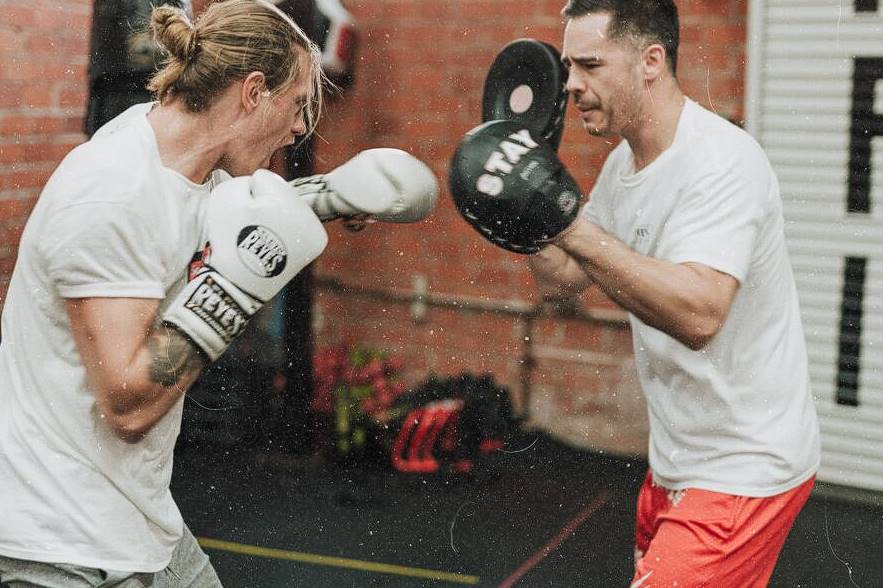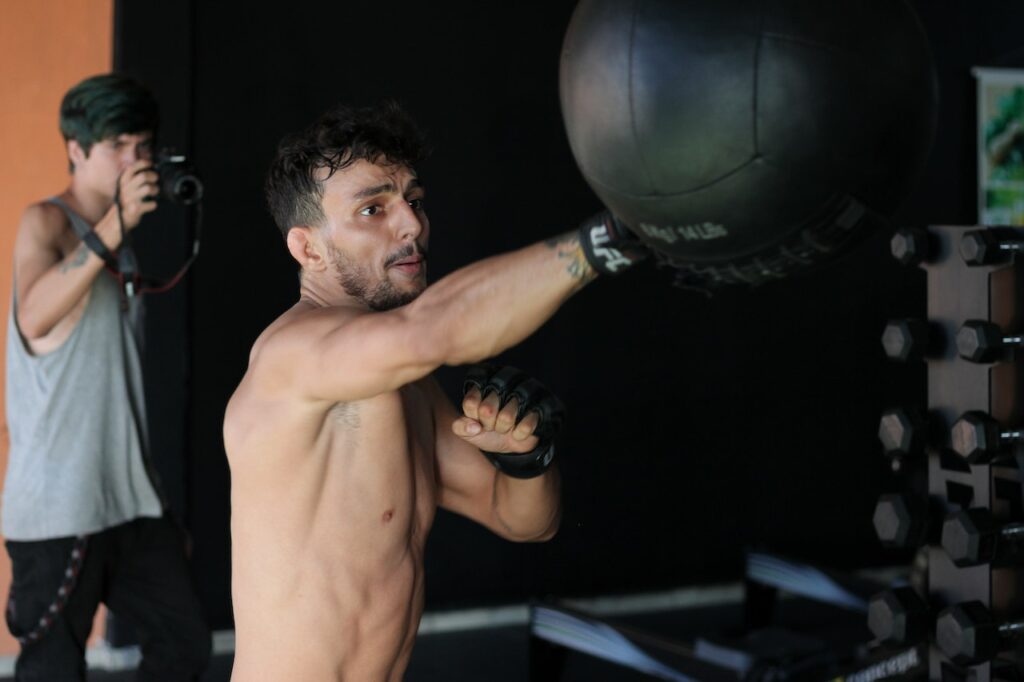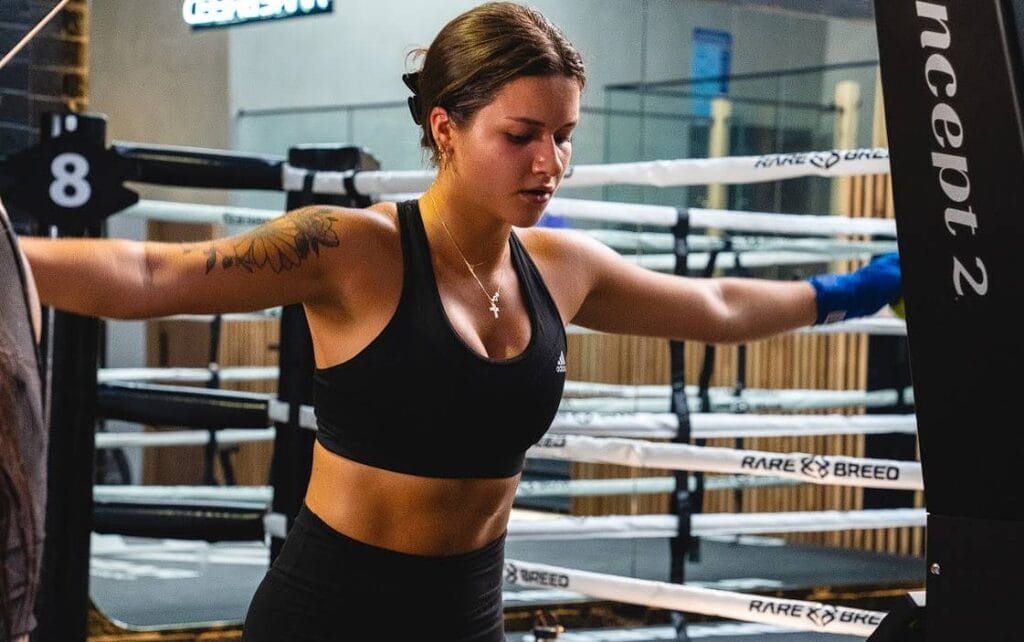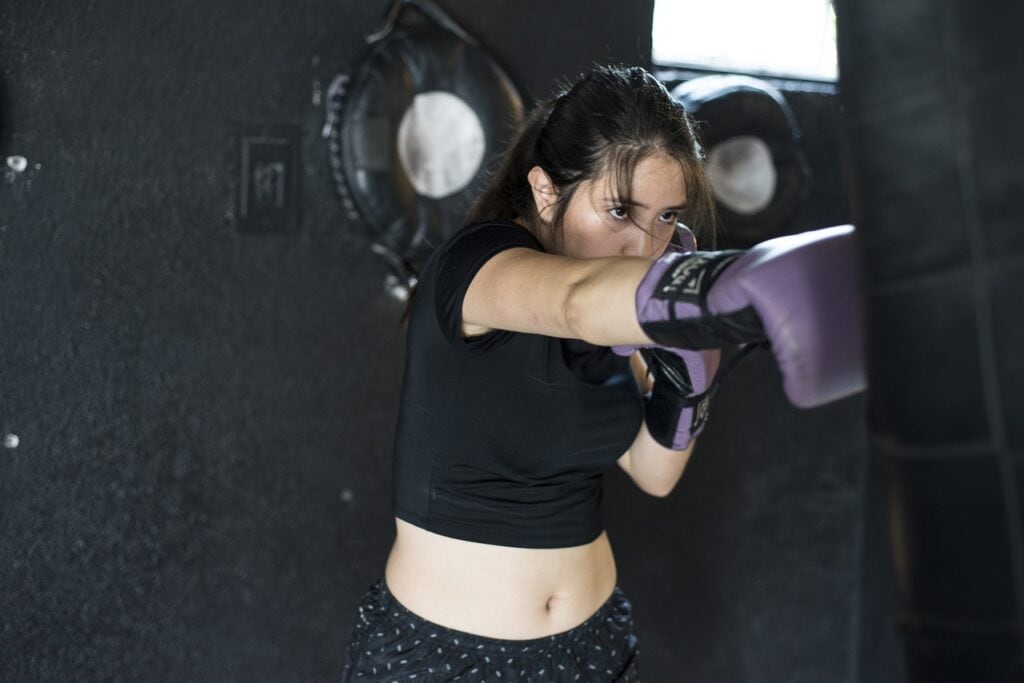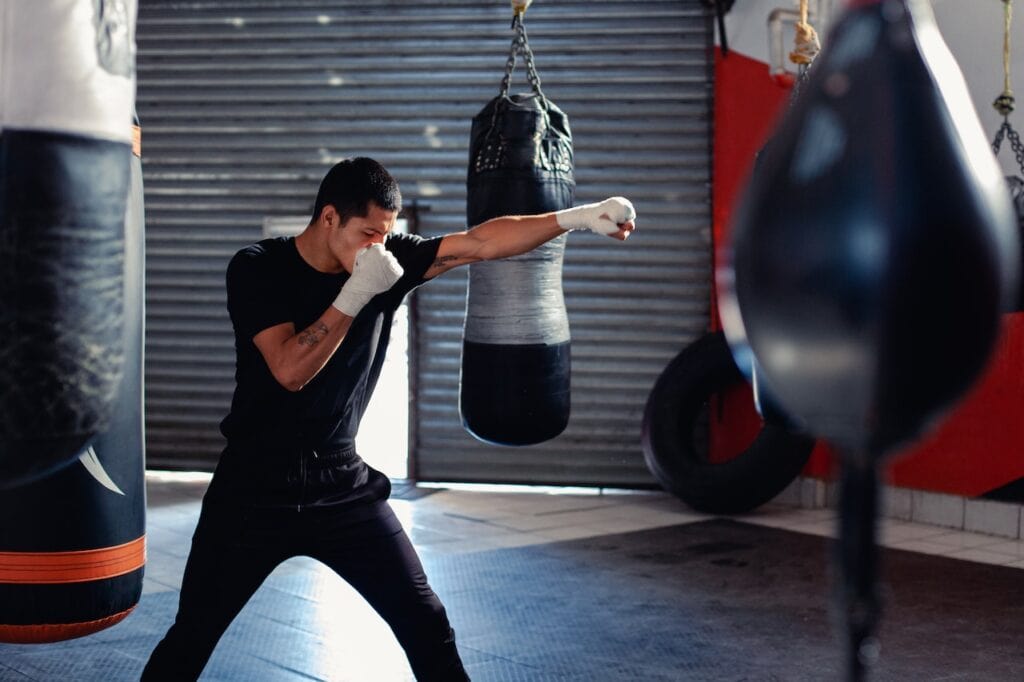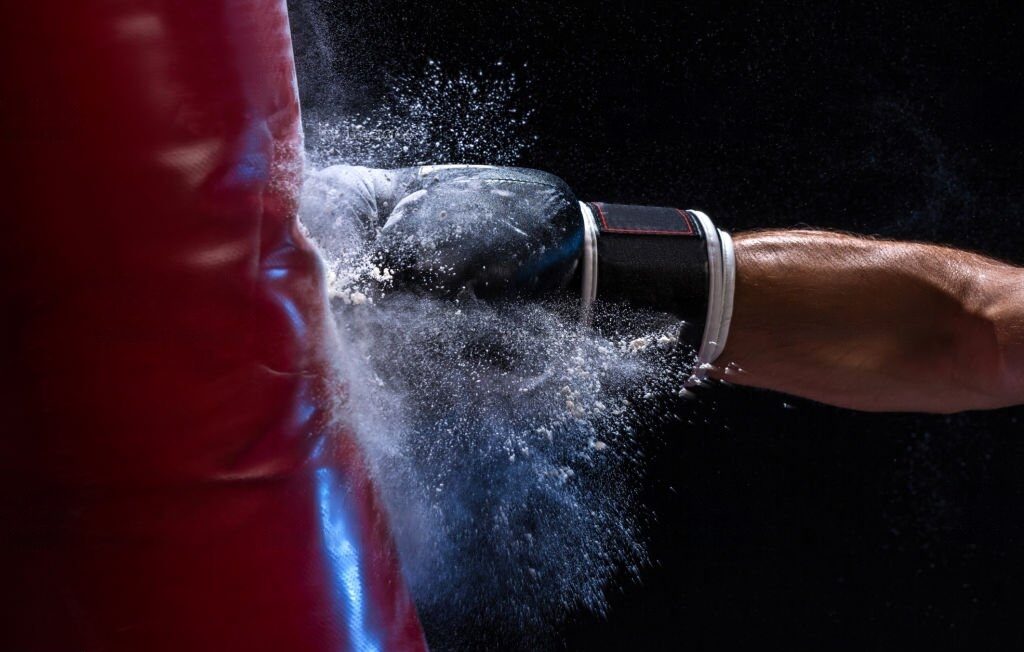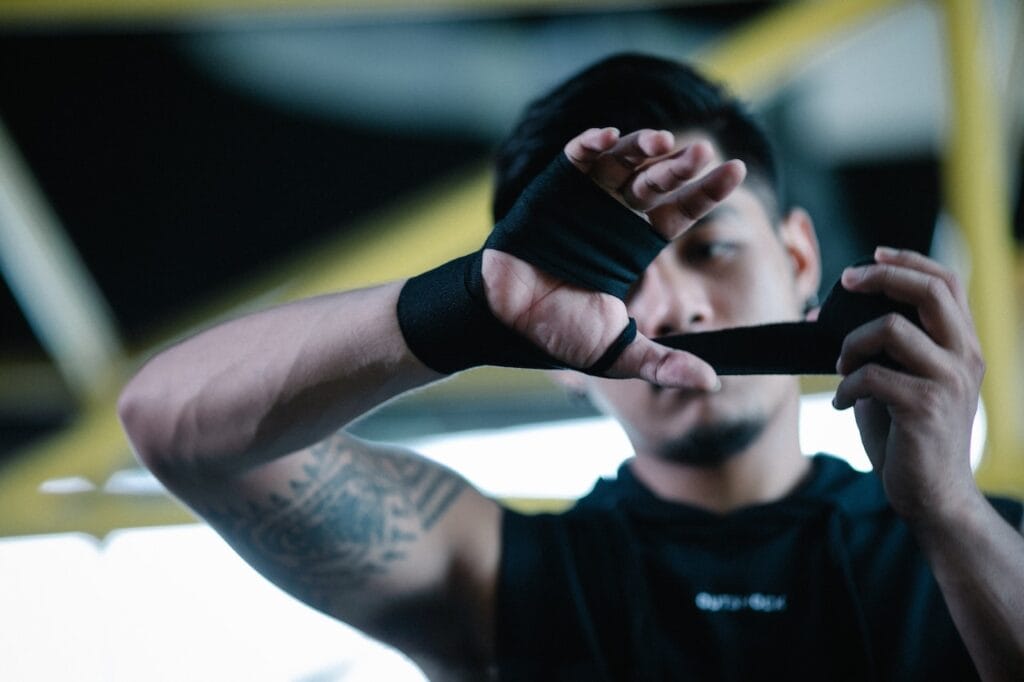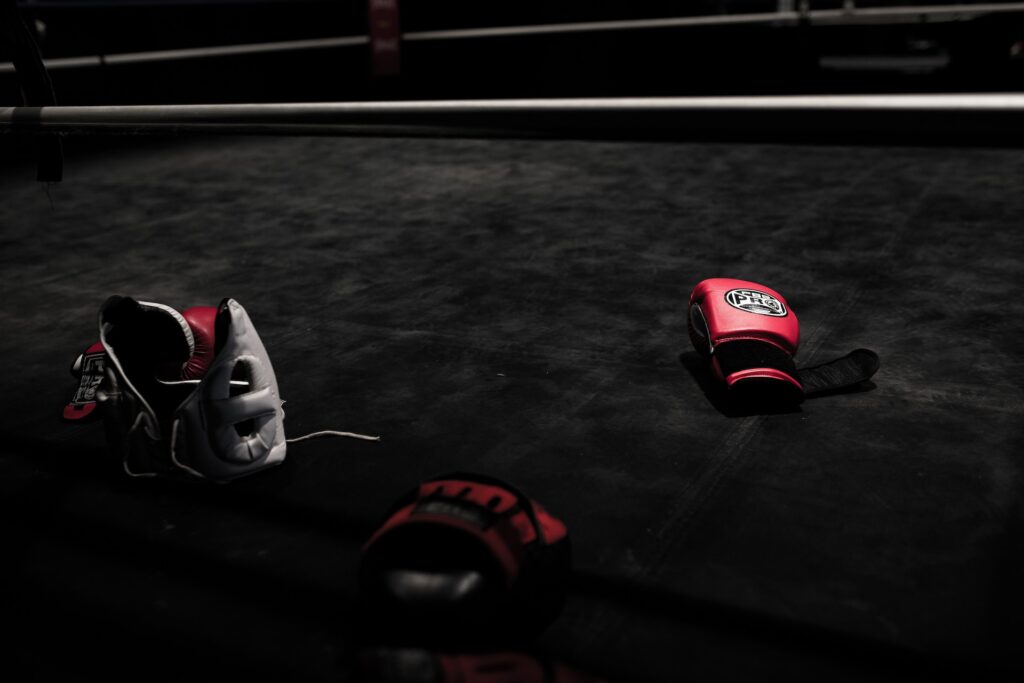When starting in boxing, it is necessary to utilise hand wraps. As a boxer, you need hand wraps that are easy to apply and pleasant, long-lasting, and provide protection for both your hands and wrists. Before putting on your boxing gloves, you can protect your hands by wrapping them in one of the many different available techniques. With experience, this will become second nature to you.
Boxing hand wraps not only provide more padding and security to the entire hand area but also help prevent chafing, abrasions, and scarring of the knuckles. In addition, they give an extra layer of protection to the entire hand.
You can choose to wear classic hand wraps, or you can go for quick wraps that securely grip your hands and protect them against the insides of your gloves. Both options are available to you today.
Before throwing their first punch, boxers always ensure they have a few essential equipment items.
Inside the boxing glove, your hands and wrists are more vulnerable to injury than outside. Hand wraps are your first line of defence against these injuries.
The Beginner's Guide to Boxing Wraps
What's the Correct Way to Wrap Your Hands?
The most important consideration to remember when wrapping your hands is the appropriate fit. For example, the wrap needs to be pulled tightly enough to keep the bones in your hands from rubbing against one another but not so tightly that it causes discomfort or prevents you from being able to make a fist correctly.
Make sure you use a crisscross pattern across the back of your hand, go between each finger, and secure the back of the hand. Go between each finger and secure the back of the hand. Never wrap something so tightly that it creases or so loosely that there are gaps. The fit should be excellent and snug to get the desired level of protection for the wrist, thumb, and knuckles.
There are many different techniques to protect your hands, knuckles, and wrists successfully, and the method you choose to wrap your hands is largely a matter of personal opinion.
How to Wrap Your Hands With Boxing Gloves
- Unroll the wrap so that the thumb loop may be accessed.
- Place your thumb inside the loop, and then wrap the material around the back of your hand.
- Three times around your knuckles should be enough to secure the material.
- Turn your palm around to the back of your hand, then wrap the material around your wrist three times.
- Turn your forearm, so your palm faces you, and move the object between your thumb and forefinger.
- Continue around your palm, and this time loop around your thumb, going in the opposite direction.
- Begin between your pinky and ring finger and work around each finger as you wrap the material around your wrist and then around each finger.
- After your fingers are wrapped, continue to wrap your knuckles three times.
- Returning to your wrist, wrap it three more times before moving on.
- Complete the wrap and fasten it securely around your wrist using the closure.
Remember that you don't want a wrap that is too long with a lot of extra material or too short and needs more protection for your hands.
How to Wrap Your Hands for Boxing
Why wrap hands for boxing?
Wrapping your hands before putting on boxing gloves to protect them is essential.
The tendons and ligaments in your hands and wrists will be protected and supported by boxing wraps.
It is also possible to assist in passing force from your fist to the target you are punching. According to the findings of a study that compared the effects of wrapping the hand vs not wrapping the hand that was conducted in 1984, the effect of wrapping the hand increased the punching power of the user.
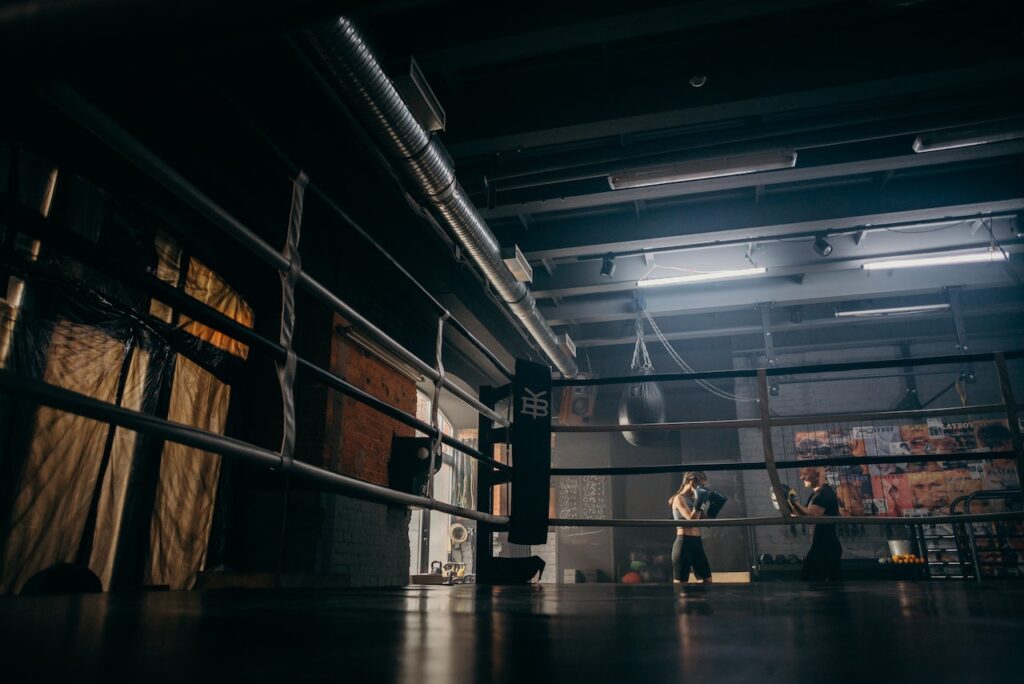
On the other side, a very limited study conducted in 2015 indicated that covering one's hands not only decreases the amount of force applied when punching but also provides greater protection for one's hands. In the end, there is a need for additional investigation into this subject before specialists can arrive at definitive findings.
The amount of sweat that transfers from your hand to your glove will also be reduced if you wrap your fists. In addition, it helps prevent the gloves from getting dirty and eliminates any odours that may be present.
Types of Wraps to Use For Boxing
There are many different kinds of wraps available for your selection. Here are some options:
Cotton wraps
These are beneficial for those who are practising for a boxing match. It is because you can utilise them on multiple occasions.
They span 108 to 210 inches (457 to 533 cm). Shower wraps are preferable when shadowboxing or boxing with persons with smaller hands. However, when sparring, longer wraps are more effective (fighting with a partner).
Elastic bandage wraps
These are similar to cotton wraps but contain elastic fibres, which allow them to conform snugly to the shape of your hand while you use them.
They can eventually become worn down to the point that the elastic gives way. In addition, some boxers may feel that they are too thick.
Gel wraps
Instead of wrapping these around your hand, you put them on like a glove and slip them on. In addition to being more expensive than cotton or elastic wraps, they offer less support, particularly around the wrist.
It is best to steer clear of these unless you require their convenience, according to a study that looked at the hand and wrist injuries that boxers sustained over seven years. The study found that boxers suffered almost equal numbers of injuries to their hands and wrists while training.
Competition wraps
Boxing rulebooks provide a particular ratio of gauze to tape for this mixture, and the ratio serves as a benchmark for the combination of the two materials.
They have a single use only. However, wrapping uses a different method that requires the assistance of a partner, which means that it could be more practical for day-to-day use.
How to Use Boxing Hand Wraps: For Beginners
HOW TO PUT ON HAND WRAPS
Here are some tips on utilising hand wraps and getting started boxing, which will vary depending on the sort of hand wraps you select.
How to Put on Quick Wraps
The maximum time required to put it on: is thirty seconds
Price: $10 - $40
Quick wraps are becoming increasingly popular as boxing wraps for beginners since they are "quicker" to put on than traditional wraps and provide all of the benefits of traditional wraps in addition to increased compression. Putting on quick wraps is as easy as donning gloves and fastening them around the wearer's wrists.
FightCamp fast wraps combine polyester and elastic, providing a snug protective barrier for your hands while still allowing air to circulate freely around them. In addition, most fast wraps can be cleaned in a washing machine and are designed to last several years, even when used often.
How to Put on Traditional Hand Wraps
Once you get the hang of it, putting it on should take between 5 and 8 minutes.
Price: $5 - $15
Traditional boxing hand wraps are typically long pieces of fabric ranging from 15 to 18 feet long. These pieces of fabric have a loop on one end and a strip of velcro on the other end, and they are wrapped deftly around a boxer's hand to protect the knuckles and secure the wrist when the boxer is throwing a punch.
To begin, you must secure the wrap by placing the loop on the wrap around your thumb. Afterwards, wrap the material around your wrist as tightly as possible while maintaining a flat and straight position. Continue going around the wrist three or four times, depending on how long you want the wrap, and finish just below where the thumb starts.
First, bring the fabric up and over the back of your hand, then across your palm, and finally, over your knuckles. Next, wrap your fingers around the object twice while keeping them spread apart to allow for some movement. The final step is to wrap your thumb a few times, then anchor it to the wrist. After that, continue wrapping for as long as the cloth allows, and finish by wrapping it around the wrist.
Traditional cotton wraps have been worn as hand protection for decades and are an excellent choice. However, the most significant drawback to using them is that you need to learn how to properly wrap your hands for the wraps to keep your hand protected and stay in place as you train.
Traditional wraps can be used to encase your hand in one of several different ways. Check out this rendition of how to wrap your hands using traditional hand wraps provided by FightCamp, which can be found here.
The wraps should make you feel safe without suffocating or restricting your circulation. Doing a few light punches on a speed bag or heavy bag is good practice to confirm that you can move your hands while they are wrapped and that they are secure enough for you to put on your gloves. It can be done to ensure you can move your hands while they are wrapped.
Guide: How to Choose Boxing Hand Wraps
No matter what style of boxing you engage in, it is imperative that you protect and support your wrist and knuckles by wrapping them in tape and using hand wraps. Usually, they consist of fabric wrapped around your hands and fastened with tape. You apply them before you put on your gloves, and this step is necessary. When properly wrapped, they ensure that you are as safe as possible when you punch someone.
Do these perform as advertised? The short answer is "yes," and the reason for this is that the additional support protects your small bones and tendons when they are subjected to pressure, such as from contact or direct strikes, because it better distributes the shock. In addition, they prevent the skin from tearing and lessen the likelihood of strains occurring. As a result, recovery time from injuries is shortened.
Here is our comprehensive guide to hand wraps to assist you in acquiring the appropriate wraps and ensuring that they are being worn in the most protective manner possible:
- When it is appropriate to use hand wraps
- How to determine the appropriate kind and size
- Boxing mitt-wrapping techniques are explained and shown
- How to accessorise properly with hand wraps
- Pricing and items that are suggested
When to wear hand wraps
When you practice and, in essence, whenever you're employing the full force of your punch or training up to this, you should be wrapping your hands and wearing hand wraps. It would help if you took extra precautions to protect your wrists in the following situations:
- Workouts in the gym Boxing with a training partner
- Any bouts in the sport of boxing (officials check)
- It is also a good idea to wear them when exercising alone, such as shadow boxing, because this gives you a better feel for your hands and helps you choose what is most comfortable for you
It is very valuable information to have when it comes to bouts. Another advantage is that you won't have to worry about getting hurt while working out, so you may strike things as hard as you want without holding back. It can help you develop good habits and become a better boxer overall.
If you haven't been covering your hands and are concerned that you may have hurt yourself, you should make an appointment with your primary care physician as soon as you can; the fitness of your hands is critical to your training.
How to choose the right type and length
Choosing the type and length of hand wraps to use is an important initial step that will help you stay comfortable and ensure you can complete repeated hits, particularly when working with a bag.
In general, the majority of boxers will utilise cloth wraps because they are a decent conventional choice. Tape and gauze wraps, on the other hand, are the lightest alternative and are readily available.
Now, which category best describes you?
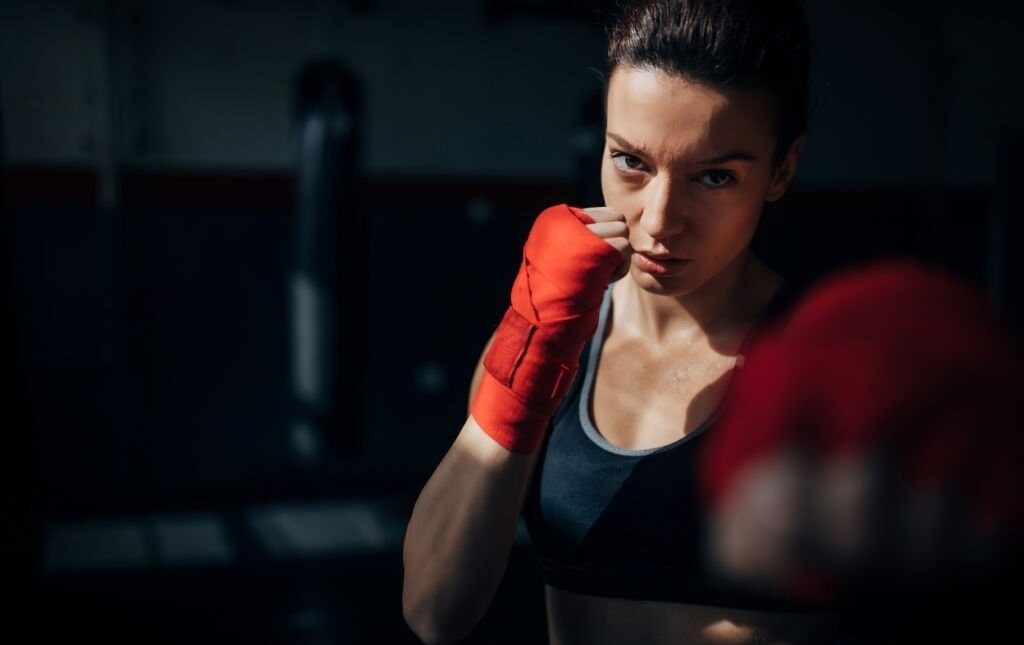
Tape and gauze
Wrapping your hands in gauze and securing them with various tapes, like gaffa tape, is a common choice favoured by professional boxers. It is also a popular choice among amateur boxers.
Because it may take some time to become proficient in the method, it is highly recommended that you begin by seeking assistance from another person. However, because it is known for being the method of hand wrapping that is both the lightest and most protective, it is ultimately worth the effort.
Reusable cloth
These are good standard wraps; you can get them from several top brands, such as Everlast. However, they also come in a range of lengths and colour options to choose from. The length of cloth wraps ranges from 180 to 210 inches, and the basic rule is that if you want greater protection, you should use a longer cloth wrap to have more material to wrap over your hands.
Choose shorter lengths if you plan to engage in solitary training and shadow boxing; this recommendation applies if you have smaller hands. Conversely, longer lengths are recommended for use in sparring and for boxers who have larger hands.
Elastic bandage ‘Mexican style’
Hand wraps made of elastic have greater stretch than hand wraps made of reusable cotton, which means they are more flexible and may be moulded to the shape of your hands while they make boxing motions.
However, they become more comfortable than your box or exercise. Again, the choice of whatever style of wrap you employ comes down to personal preference; give them a shot and see which one improves your performance the most. They are sturdy, but their lifespan is significantly shorter than fabric wraps.
Length and width
Because different kinds of wraps and tapes are available in various lengths, you must calculate how much material you will want. To a significant extent, this can only be learned by experience, but as a general rule of thumb, the more cloth you need to wrap your hands securely, the larger your hands are.
You should also take into account the width in addition to the length. Although the typical width of a wrap is 2 inches, you can discover manufacturers that offer widths that are either thinner or thicker than this. It is entirely dependent on one's preferences rather than the actual results. When you use velcro to secure the wraps, broader wraps will give you a greater grip.
Fastening materials
Most fabric and Mexican-style wraps may be purchased with the attached velcro fastening, making them simple to use and long-lasting. Velcro closures are often regarded as the most convenient type of fastener, and a wide variety of gloves, wrist wraps, and hand wraps have included this type of closure in their overall design. If, on the other hand, you buy your material without a finished fastening, it has the potential to rip and harm the fabric.
Tape is another typical method of fastening, and you can see examples of tape and gauze hand wraps in the table that is located above. Tapes have serrated edges, have strong adhesives, can be torn by, and can be purchased in lengths of up to 10 meters.
Hook and loop fasteners are another type of closure that can be used. We keep them in stock since they allow you to get a longer life out of your wraps, ultimately resulting in cost savings over time.
Gel wraps?
You may also be familiar with Gel Wraps, which are not technically considered wraps. They have a distinct appearance and texture, and the primary advantage is that using them is significantly quicker because they can be put on like gloves.
However, they provide adequate support for the knuckles but do not wrap over the fingers, and many boxers have discovered that they provide less protection for the wrists than their cloth counterparts do.
The price of gel wraps can be more than twice as much as that of cloth wraps, so the primary reason to go for gel wraps is their ease of use and practicality. It is best to be aware of them if they coincide with your current workout routine.
How to wrap your hands for boxing
Before beginning the process of wrapping, it is recommended that you do the basic hygiene practice of washing your hands and drying them thoroughly.
How to wrap
There are various approaches to wrapping one's hand, and the one you choose will depend on the degree of snugness you desire and your level of comfort wrapping between each finger. The following is a detailed guide that will walk you through normal hand wrapping:
- Take hold of the hand wrap material with the hand you use most often.
- Spread the fingers on your other hand completely and lay your thumb on the hand wrap while keeping the palm of your other hand facing away from you. Make a loop with the material so that it will stay in place.
- Take the fabric and wrap it around your wrist until you feel slightly tight, which should be around the third time you do this. Check to see whether it is cutting off your circulation in any way.
- At least three more times must pass between each of the next steps: wrapping the thumb, then wrapping the wrist.
- While your fingers are still apart, wrap the knuckles from right to left across the palm three times. Pull each wrap as tightly as is comfortable for you.
- After that, wrap it around your wrist a second time and loop it around.
- Bring the wrap between your middle and ring fingers, then wrap it around your palm, and finally, bring it back over the top of your thumb.
- You will make another loop around the knuckles from this starting point, then bring it around your wrist to complete it.
- To conclude, ensure your fastening is secure (most likely velcro).
As you work from the palm between your fingers, it is helpful to think of the wrap as a pattern that resembles a figure of eight. A ribbon pattern is another name for this particular design.
After use/Cleaning
Before rolling the wrap-up and putting it through a typical wash cycle in the washing machine, you should check it for any tears. Please make sure the wraps don't get trapped or tangled in the machine by purchasing a mesh bag to store them in. Please put the item somewhere it can dry out before using it again.
What to wear with hand wraps
Hand wraps can be worn with MMA, boxing, and sparring gloves. They can also be worn with wrist straps and additional padding. When purchasing gloves, it is necessary to try them on while wearing the hand coverings that you normally wear. This way, you can obtain an accurate picture of how they will fit you and how comfortable they will be in the long run. Please look at our buyer's guide for boxing gloves right here.
After wrapping your hands, you are free to wear any gloves you like, but as we have discussed previously, you should always combine hand wraps with gloves for safety reasons.
Pricing and recommended products
If you believe you need additional protection or have several battles where you will be testing your hands and strength, we recommend that you choose a top brand for your chosen type of hand wrap and pick a larger length. We also recommend that you choose a longer length.
It is recommended to get many hand wraps so that you always have a pair that is in good condition and clean to use. A typical hand wrap that secures with velcro can be purchased for about five pounds, which is a reasonable price even when your other socks are in the wash, for example.
Because the majority of manufacturers provide a variety of colour options and design patterns, you can't go wrong by selecting wraps from the following manufacturers:
- Pro Box Adidas (competition approved)
- Ringside
- Bytomic
- Exigo
- Sandee
- BBE
These wraps offer heavy-duty protection and comfort for frequent bouts, allowing you to concentrate on the task while maintaining focus. In addition, the vibrant collection offered by Lonsdale, which has excellent elasticity and hook-and-loop fastenings, is designed to last longer.
ARE HAND WRAPS NECESSARY FOR BOXING?
If you have ever seen a professional fighter training bare-knuckle or drilling on a heavy bag with only boxing wraps alone, you may be curious about whether or not this is a method that you can attempt on your own. Unfortunately, the answer is that it depends.
This training method is intended to toughen the boxer's hands so that they can compete at a higher level. In addition, they have gone through a series of specialised drills to successfully strike a target without significantly injuring their fists.
When punching a punching bag and sparring, it is recommended that you use hand wraps and boxing gloves to protect your hands. Whether you are training for fitness or mastering a new talent, it is true. In addition to acting as a shock absorber for your hands, the wraps will help prevent your hands from being calloused and bruised.
DO YOU NEED TO WEAR BOXING HAND WRAPS UNDER BOXING GLOVES?
Yes. Even if you have the most comfortable boxing gloves, it is still a good idea to wrap your hands with traditional boxing hand wraps or quick wraps before you begin. Consider using hand covers with your gloves like you would wear socks with your shoes. Since it would be excruciating, you would only dream of going on a trek or a long run with socks.
The use of hand wraps in boxing adheres to the same philosophical underpinnings. The wraps are between your hands and the gloves, which are a barrier. They guard your knuckles, keep your wrists in place, and assist in reducing the risk of injury to your hands.
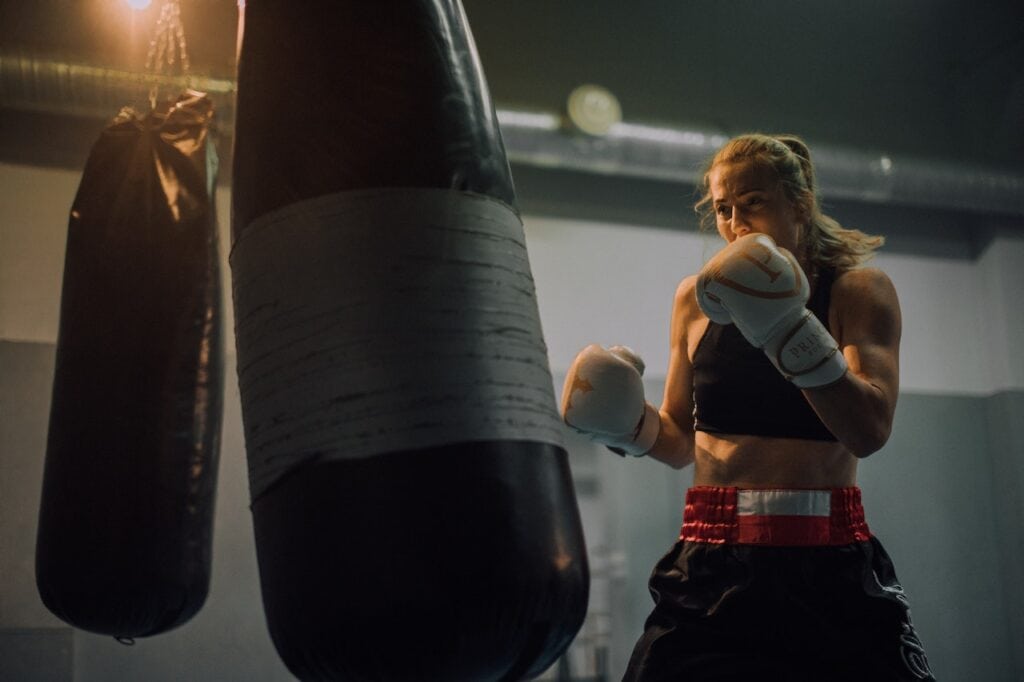
WHICH BOXING HAND WRAP IS RIGHT FOR ME?
When you are learning how to wrap boxing gloves and selecting the hand wraps that will work best for you, there are a few things you need to keep in mind:
Material
Quick Wraps
Typically constructed from polyester blends enhanced with elastic to impart a form-fitting appearance without feeling overly constrictive.
Pros:
- The fabric can wick away moisture and is machine washable
- Very long-lasting
Cons: It is mostly utilised for training rather than aggressive sparring or competition.
Traditional Hand Wraps
Combinations of cotton and other fabrics.
Pros:
- Boxers' hands have been protected by using them for decades, which is a pro
- Typically available at a low cost
Cons:
- There is a learning curve for getting your wraps "right"
- You may need to apply tape on top of your wraps
Ease of Use
The hand-must wraps you use are pleasant and simple to put on and maintain clean. Quick wraps are typically the hand wraps that are easiest for novices because they can be put on in just a few seconds. However, you may prefer classic hand wraps as your skills improve.
Durability
Even with consistent use, hand wraps of good quality should survive for several years. However, compared to when they are only utilised within your gloves, using your wraps directly on the bag will cause them to wear out far more quickly. Bear this in mind if you box using only hand wraps instead of gloves.
Cost
Regarding sporting goods, the price tag and the quality almost always go hand in hand. In the case of hand wraps, this is likewise the case. Depending on the type of cloth used, boxing hand wraps can range in price from less than $30 to several hundred dollars. When determining how much money to spend on new wraps, ensure that the material, reviews, and longevity are all considered.
How to Choose Boxing Hand Wraps
BOXING HAND WRAPS TYPES
Let's get started on compiling a list of the various types of boxing hand wraps that are now for sale on the market:
- Cotton is used to make hand wraps
- Hand wraps in the manner of Mexican cuisine
- Under gloves that are padded with gel
- Elasticated under gloves
- Gauze bandages
1. COTTON HAND WRAPS
Hand wraps made of cotton are the most typical and popular variety. They are constructed entirely of cotton, so they are quite durable even if worn and washed regularly, and their lifespan may be pretty long. However, it is important to remember that the longevity of your boxing bandages also depends on how you use them and how well you take care of them. So take care of them appropriately, and remove them from the bag at the end of each training session.
If the material composition of a pair of boxing hand wraps is not indicated on the packaging, you can grip them and give them a light stretch to determine whether or not they are composed of cotton. If the bandages stretch by more than a few millimetres, there is certainly some percentage of elastic material in them, which makes this a Mexican-style hand wrap.
As a means of fastening, the cotton hand wraps each come equipped with a thumb loop at one end and a band of Velcro on the other. The width can range from 5 to 6 centimetres, while the length can be anywhere from 2 to 5 meters.
2. MEXICAN-STYLE HAND WRAPS
Hand wraps made in the Mexican style have an appearance, size, and measurements that are extremely comparable to cotton ones. The elastic component is the primary differentiator between the two. The degree to which this bandage can be stretched is a variable that is completely up to the manufacturer's discretion.
On the product's label or in the product's technical specifications, you could occasionally see the proportion of elasticised material. A value between 10 and 30 per cent is the most common. Boxing bandages in the Mexican style are more pleasant, but you must carefully wrap them correctly if you are starting. They may reduce the amount of blood that flows through the hand if over-tightened.
Compared to cotton hand wraps, those with elastic may have a shorter lifespan. After use and washing, elasticated materials tend to deteriorate more quickly than cotton fabrics. It applies to all items that use elasticised materials.
Therefore, I recommend handling the product with caution. Look at our tutorial if you need to help maintaining your boxing hand wraps if you are still getting familiar with the process.
Insofar as officially sanctioned battles and events are concerned, what we previously stated remains true. Always ensure that the federation or organisation running the event has no specific requirements regarding the features that must be included on hand wraps. For example, the AIBA organisation, which was just mentioned, mandates that boxing hand wraps have a slight degree of elasticity.
3. UNDERGLOVES WITH GEL PADDING
The use of under gloves, including gel padding, has recently gained popularity and can now be found almost everywhere. One of their defining characteristics is that they can be put on very quickly and with little effort.
Putting it on is the same as putting on any other glove, and there is typically a Velcro band around the wrist to secure it. Beginners and amateur boxers use it, but fitness enthusiasts are also quite common users, and they enjoy its usefulness.
As I said earlier, it is really simple to put on, and it does not call for specialised knowledge or abilities to utilise. Therefore, many fighters and martial artists prefer this type of bandage over regular bandages because it can be put on more quickly and is more convenient to use.
People who have sensitive knuckles and fingers will find that the inner glove, which is often made of polyester and features gel padding on the knuckles, is an excellent investment. However, because it does not provide adequate support for the wrist region, professional fighters do not utilise it because this is one of the product's weak points.
In this section, rather than length and width, you will discover the usual sizes of small, medium, large, and extra-large.
4. ELASTICATED UNDER GLOVES
Under gloves that stretch are similar to gloves with gel padding on the palm. A little Velcro band could be used as a closure device. However, this is only sometimes the case. They do not contain any cushioning. Hence it is not recommended to use them for training purposes related to combat sports.
If you wish to train in fit-boxe or other comparable fitness activities that involve light touch or none at all, the type of inner gloves that we are talking about here is rather good. The wrist does not receive even the slightest support from these under gloves.
For example, the sizes of these under gloves range from small to extra-large according to what is considered to be the traditional sizing system.
5. GAUZE BANDAGES
Since applying gauze bandages requires a particular set of skills, only medical experts utilise them. At the amateur level of competition, hand wrapping of this kind is not permitted, but it is a common practice in professional bouts.
It is inconceivable to consider working out while wearing a gauze bandage because, for starters, doing so takes a significant amount of time and, more importantly, requires the support of a trained specialist. You need help to complete this task.
In addition, if you are planning to participate in a competition, review the guidelines provided by the organisers about wrapping your hands. For example, federations and associations can stipulate that the gauze bandage must be of a specific width or length.
Because this is a bandage designed for use in a professional setting, it provides a wide variety of benefits, including high protection to the bones and the soft tissues, the ability to fill all of the empty areas in the boxing glove, and is significantly more rigid and durable than other solutions.
Conclusion
Consider wrapping your hands before putting on your gloves when working on the bag, shadow boxing, or sparring.
It's possible that wrapping your hands will make your blows more powerful, but more significantly, it will safeguard your hands, fingers, and wrists while participating in a sport with a high risk of injury.
Frequenly Asked Questions
What length and width of boxing wraps should beginners choose?
The length and width of boxing wraps can vary, but for beginners, it is recommended to choose wraps that are around 180 inches long and approximately 2 inches wide. This length provides ample coverage for the hands and wrists, allowing for proper wrapping technique and secure support. The width of 2 inches ensures a snug fit and offers adequate protection to the vulnerable areas of the hands.
Can boxing wraps be reused, or should they be replaced regularly?
Boxing wraps can typically be reused unless they are damaged or worn out. It is essential to inspect your wraps regularly for any signs of wear, such as fraying, tears, or loss of elasticity. If you notice any damage, it is recommended to replace them promptly to ensure optimal hand protection. Regularly washing your wraps will also help maintain hygiene and extend their lifespan.
Are there any alternative options to boxing wraps for hand protection?
Yes, there are alternative options available for hand protection in boxing. Some athletes prefer using gel or foam-padded gloves that provide built-in hand support and eliminate the need for wraps. However, it's important to note that these alternatives may not offer the same level of customizable support and wrist stability as boxing wraps.
Additionally, certain combat sports organizations may require the use of wraps for sanctioned events. It's advisable for beginners to consult with a coach or trainer to determine the best hand protection option based on their specific needs and training requirements.
How do I know if my boxing wraps are tight enough?
To ensure your boxing wraps are tight enough, you should feel snug and secure fit around your hands and wrists. The wraps should provide support and stability without cutting off circulation or causing discomfort. You can test the tightness by making a fist and flexing your hand. If you experience any pain, numbness, or tingling, it may indicate that the wraps are too tight. Adjust them accordingly to achieve a comfortable yet firm fit.
How often should I replace my boxing wraps?
The frequency of replacing boxing wraps depends on various factors, such as the frequency and intensity of your training, as well as the quality and condition of the wraps. As a general guideline, it is recommended to replace your wraps every few months or when you notice significant wear and tear.
Regularly inspect the wraps for signs of fraying, thinning fabric, or decreased elasticity. If they no longer provide adequate support or show signs of deterioration, it's time to invest in a new pair to maintain optimal hand protection.
